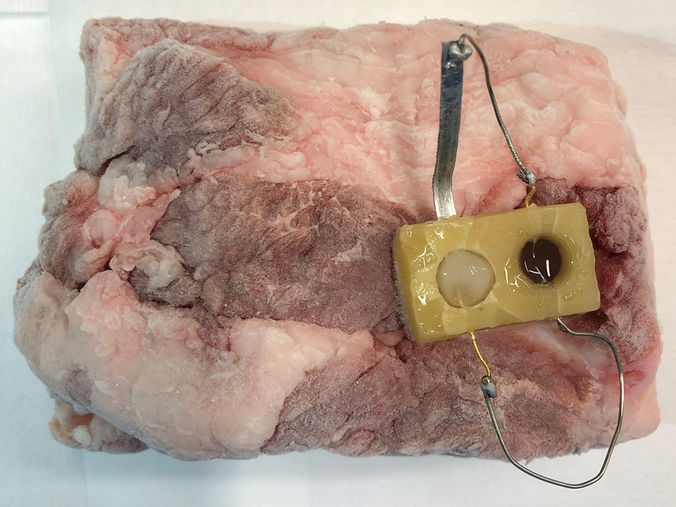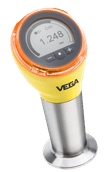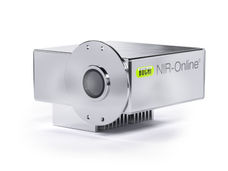Toward a fully edible sensor showing if frozen food has previously thawed
When you’re standing in the frozen food aisle, it’s nearly impossible to know whether that Salisbury steak has thawed and refrozen — a process with potentially harmful consequences. So, researchers reporting in ACS Sensors have designed a food-grade device from edible materials, including table salt, red cabbage and beeswax, that lets you know. The proof-of-concept sensor provides a color readout when it’s warmed above a specific temperature, which is tunable from -58 F to 32 F.

A proof-of-concept sensor designed from edible materials produces a visible color change (seen in the right circle) as a piece of frozen pork thaws.
Adapted from ACS Sensors 2022, DOI: 10.1021/acssensors.2c01280
Keeping food cold while it’s transported and stored is essential to retaining its flavor and quality, reducing the risk of food poisoning and minimizing waste. While researchers have developed devices that alert manufacturers when cold items are exposed to unwanted temperatures, they only indicate changes above freezing. To create a sensor for frozen products, one solution could be to use materials with electrical properties that are altered upon melting. It would also be ideal if such changes could produce a signal, such as a visible color change. In addition, an edible electronic device, which uses only food and consumable components, would be the safest way to monitor food. So, Ivan Ilic, Mario Caironi and colleagues set out to develop the first fully edible, self-powered temperature sensor with a visible color indicator for use with frozen products.
The researchers started by building a device that generated an electrical current as it defrosted, connecting magnesium and gold electrodes through an electrolyte solution held in a plastic container. They tested the device with solutions of frozen edible electrolytes, including table salt and calcium-containing salts, and naturally electrolyte-rich foods, including a grape, melon and apple. As the solutions defrosted, they conducted current between -58 F and 32 F, which the researchers say could be fine-tuned, based on the amount and identity of the salt. Next, this device was connected to a color-changing system, containing tin and gold electrodes and red cabbage juice, that produced an irreversible shift from reddish purple to blue when current was applied.
In the final step, the team put all of the parts together in a block of beeswax that held the temperature-activated and indicator solutions in separate chambers, and demonstrated that the self-powered device could be used for frozen food monitoring. The researchers say that their proof-of-concept sensor paves the way for edible materials to be used in inexpensive, safe technologies that alert customers to a frozen product’s storage history.
The authors acknowledge funding from the European Research Council, the European Union's Horizon 2020 program and the Sustainability Activity of Istituto Italiano di Tecnologia.
The American Chemical Society (ACS) is a nonprofit organization chartered by the U.S. Congress. ACS’ mission is to advance the broader chemistry enterprise and its practitioners for the benefit of Earth and all its people. The Society is a global leader in promoting excellence in science education and providing access to chemistry-related information and research through its multiple research solutions, peer-reviewed journals, scientific conferences, eBooks and weekly news periodical Chemical & Engineering News. ACS journals are among the most cited, most trusted and most read within the scientific literature; however, ACS itself does not conduct chemical research. As a leader in scientific information solutions, its CAS division partners with global innovators to accelerate breakthroughs by curating, connecting and analyzing the world’s scientific knowledge. ACS’ main offices are in Washington, D.C., and Columbus, Ohio.
Other news from the department science
These products might interest you
Most read news
More news from our other portals
See the theme worlds for related content
Topic world Food safety
Food safety is at the heart of the food and beverage industry. It ensures that the food we eat every day is not only nutritious, but also free of harmful contaminants. From field to plate, the industry monitors and regulates every step of the process with strict quality controls, advanced testing methods and continuous research.

Topic world Food safety
Food safety is at the heart of the food and beverage industry. It ensures that the food we eat every day is not only nutritious, but also free of harmful contaminants. From field to plate, the industry monitors and regulates every step of the process with strict quality controls, advanced testing methods and continuous research.






























































